IC 410 in Hubble Palette
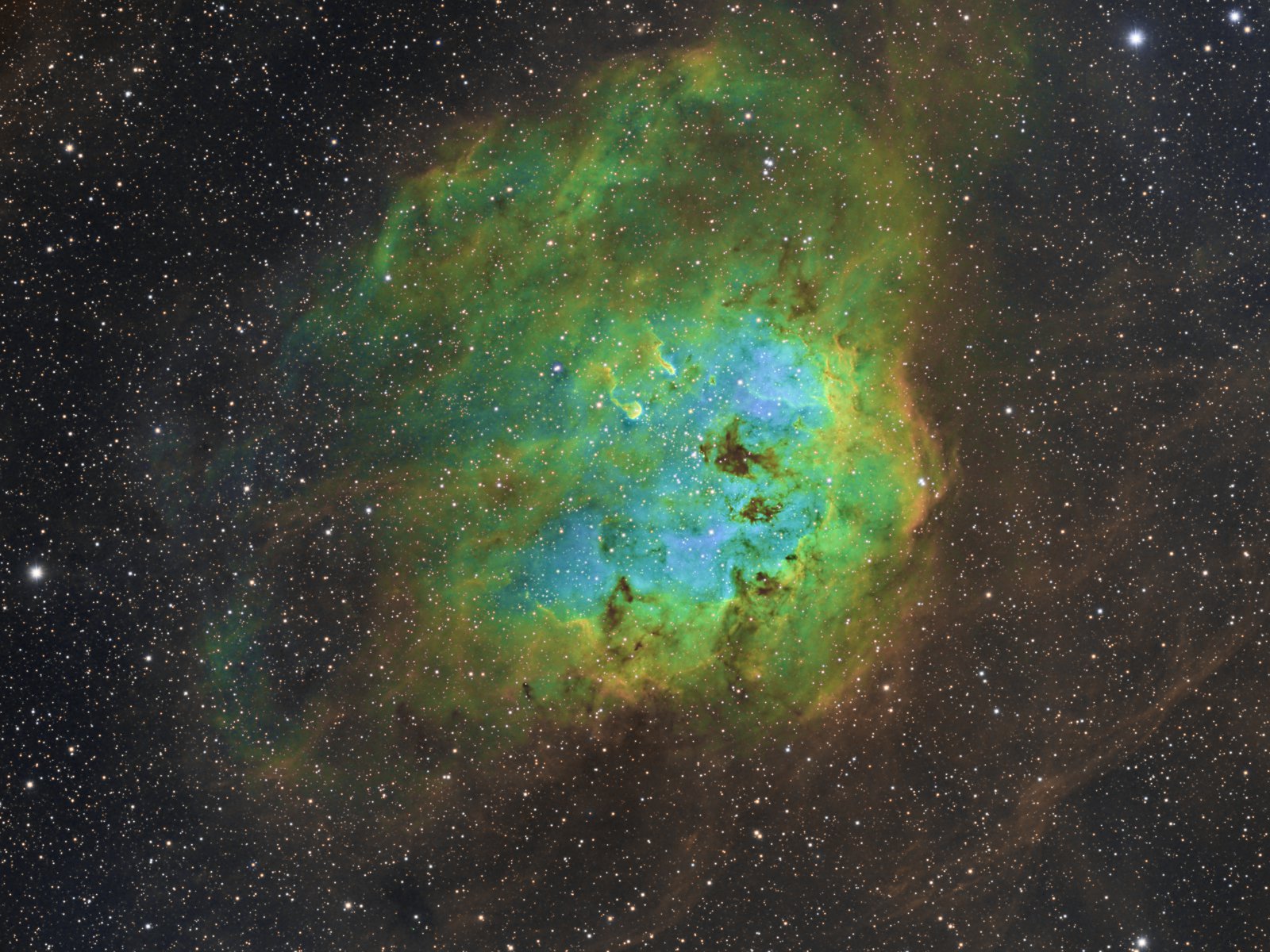 Click image for full size version
Click image for full size version
January 23, 2022
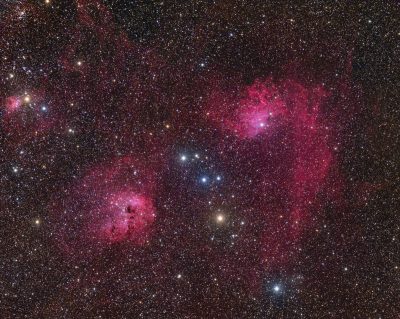 IC410 is a dim, glowing patch of hydrogen gas about 100 light years across and 12,000 light years away in the direction of Cassiopeia. The star cluster NGC 1893 is in the centre of the nebula. The “tadpoles” at upper left of the nebula are about 10 light years long. New stars may be forming in these structures. The dark patches in the nebula occur where dust obscures the glowing gas. This image was made using 3nm narrowband filters from Optolong and is rendered in the Hubble Palette.
IC410 is a dim, glowing patch of hydrogen gas about 100 light years across and 12,000 light years away in the direction of Cassiopeia. The star cluster NGC 1893 is in the centre of the nebula. The “tadpoles” at upper left of the nebula are about 10 light years long. New stars may be forming in these structures. The dark patches in the nebula occur where dust obscures the glowing gas. This image was made using 3nm narrowband filters from Optolong and is rendered in the Hubble Palette.
At left, a natural-colour image shows IC 410 in a larger field with IC 405 and IC 417.
Tekkies:
Acquisition, focusing, and control of Paramount MX mount with N.I.N.A., TheSkyX and PHD2. Focus with Optec DirectSync motors and controller. Equipment control with PrimaLuce Labs Eagle 4 Pro computer. All pre-processing and processing in PixInsight. Acquired from my SkyShed in Guelph. Average transparency and seeing. Acquired November 7, 2021 – January 7, 2022, mostly under a moderately moonlit sky.
Sky-Watcher Esprit 150 f/7 refractor and QHY600M camera with Optolong H-alpha, O(III) and S(II) 3nm filters
O3: 15 x 20m = 5hr00m
S2: 9 x 20m = 3hr00m
Total: 12hr
Data Reduction and Cleanup
The WeightedBatchPreProcessing script was used to perform calibration, cosmetic correction, weighting, registration and integration of all frames.
Chrominance
Creation and cleanup: The S2, Ha and O3 were combined to make an RGB image. DynamicBackgroundExtraction and BackgroundNeutralization were applied to the image.
Linear Noise Reduction: MultiscaleLinearTransform was used to reduce noise in the RGB image. Layer settings for threshold and strength: Layer 1: 5.0 0.85 Layer 2: 4, 0.75 Layer 3: 3, 0.64 Layer 4: 2.0, 0.2 Layer 5: 1, 0.1.
Stretching: HistogramTransformation was applied to make a pleasing, bright image, with background set to an intensity of approximately 0.10
Luminance
Creation of Synthetic Luminance: ImageIntegration was used to make a noise-weighted average of the three narrowband masters. This was used as synthetic luminance.
Deconvolution: A star mask was made to use as a Local Deringing Support image. A copy of the image was stretched to use as a deconvolution mask. Deconvolution was applied (45 iterations, regularized Richardson-Lucy, Parametric PSF mode).
Linear Noise Reduction: MultiscaleLinearTransform was used to reduce noise in the background areas, using an internal mask to protect bright structures. Layer settings for threshold and strength: Layer 1: 4.0 0.9 Layer 2: 3.0, 0.75 Layer 3: 2.0, 0.6 Layer 4: 0.5, 0.2.
Stretching: HistogramTransformation was applied to make a pleasing, bright image, with background set to an intensity of approximately 0.10.
Combining Luminance and Chrominance
LRGB Combination: The synthetic luminance was applied to the chrominance image using LRGBCombination with default settings.
Additional Processing
Nonlinear Noise Reduction: TGVDenoise was used in L*a*b* mode to reduce noise with a mask used to mainly target the background areas and protect the stars (90 iterations for L and 125 iterations for chrominance).
Contrast Enhancement: LocalHistogramEqualization was applied three times using a mask to select the bright parts of the nebula and protect stars and background. Max contrast of 1.5 and 1 iteration was used for each pass of LHE. Scale and strength were (50, 0.25 ), (100, 0.25), (150,0.3).
Sharpening: MultiscaleMedianTransform was used to sharpen Layers 2, 3 and 4 with strengths of 0.3, 0.18 and 0.08, respectively. A mask was used to limit sharpening to high-signal areas, while protecting stars and background regions.
Hue Adjustment: The green tones were transformed towards blue, and yellows towards red, using multiple applications of the CurvesTransformation Hue control. Additional hue and contrast adjustments to the blue tones were made using a Blue mask generated with the ColorMask script.
Final Steps: Background, nebula and star brightness, contrast, saturation and hue were adjusted in several iterations using CurvesTransformation RGB/K control with masks as required. The DarkStructureEnhance script was applied with a strength of 0.2. ICCProfileTransformation (sRGB IEC61966-2.1; Relative Colorimetric with black point compensation) was applied prior to saving as a jpg.

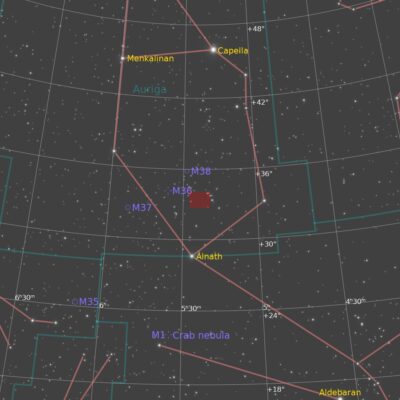
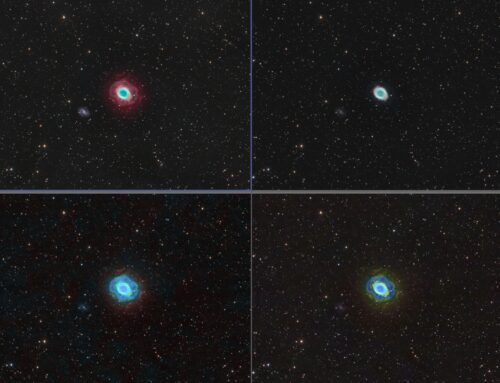



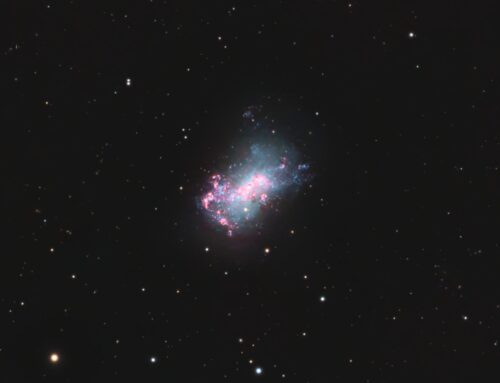
Leave A Comment